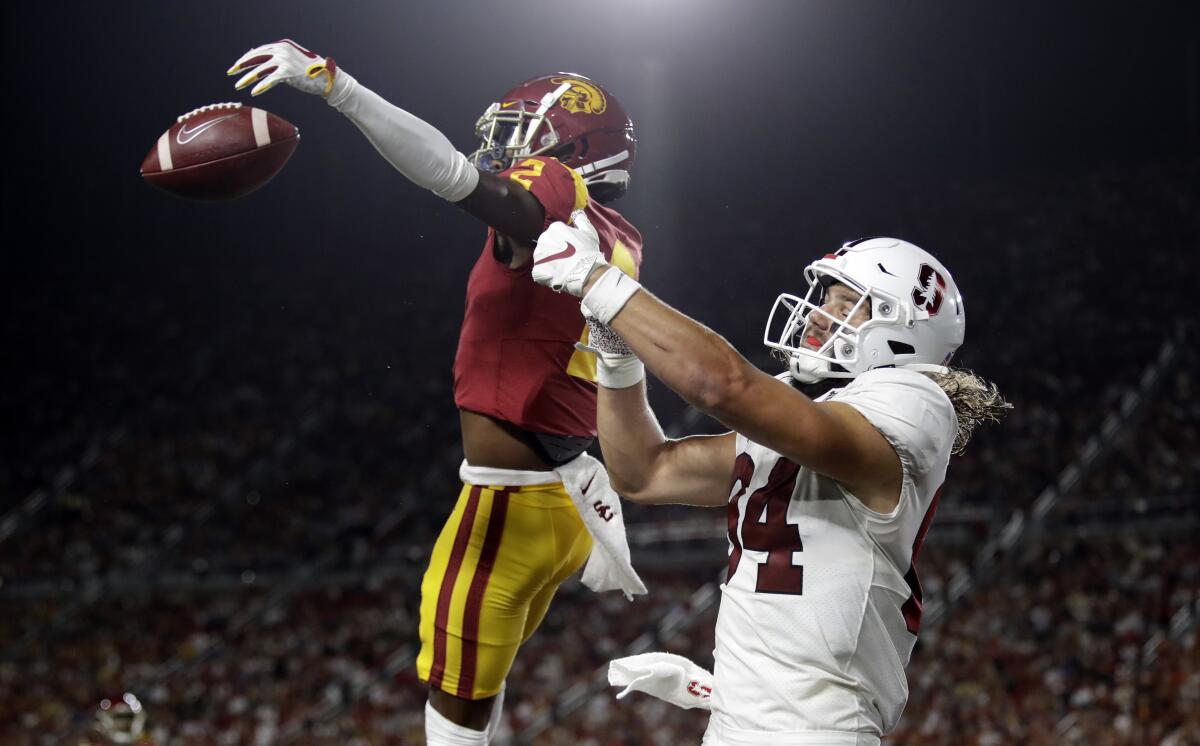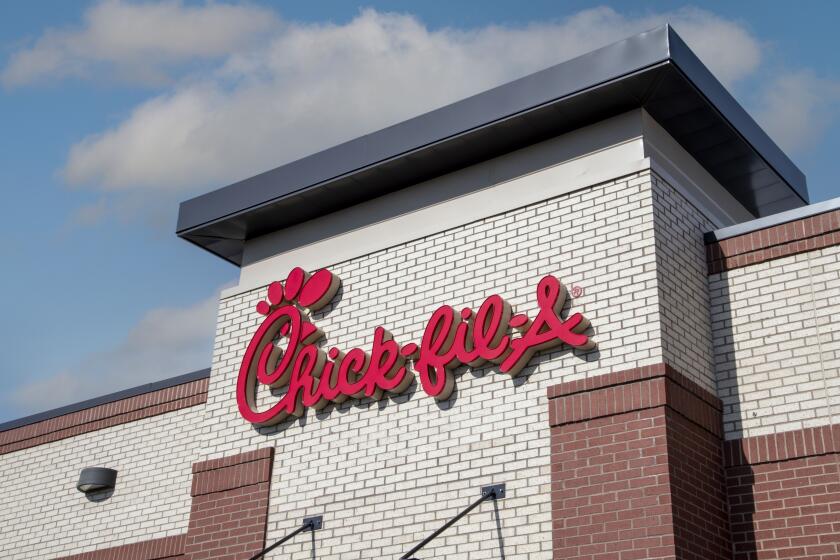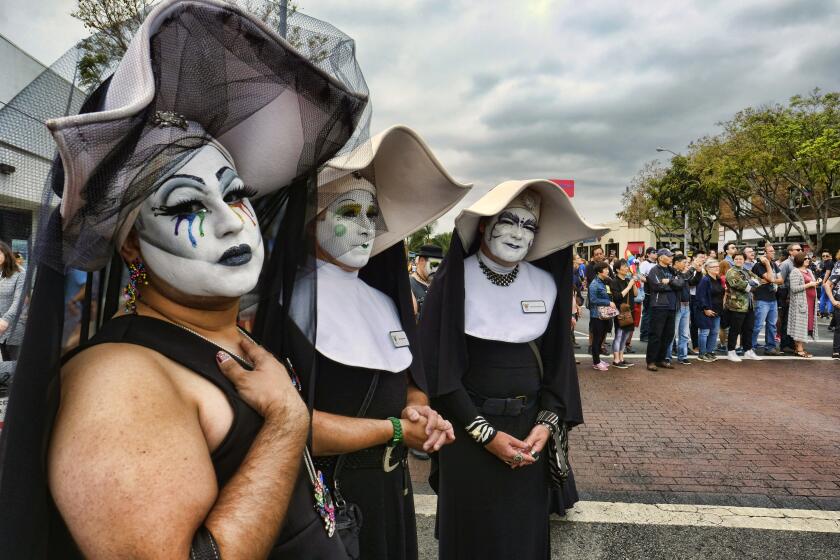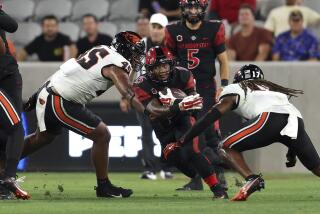Column: College football’s in chaos. It’ll still be fun to watch

- Share via
A lot of college football fans are looking for a villain to blame.
“Who is responsible for this?” As though the recent flood of NCAA conference realignments were fodder for a murder podcast.
The latest answer, from Arizona State’s president, is: “the overlords of the media empire.”
How convenient.
Opinion Columnist
LZ Granderson
LZ Granderson writes about culture, politics, sports and navigating life in America.
The shuffles dictated by football certainly do complicate the schedules of every other team on campus. Departures such as Arizona State’s and USC’s threaten the very solvency of longstanding conferences such as the old PAC-12, which after eight schools defected for greener pastures is now down to being the PAC-4. At some point it feels like it’s time to pack it up — along with all of that glorious history of conference rivalries and classic games.
In some ways it will sever us from sports history. It was one thing when Kareem Abdul-Jabbar lost the NBA’s all-time scoring record this past winter, but soon he could see his entire college conference disappear. As cynical as I can be when it comes to the NCAA and the business of college sports, I’m a bit saddened by all this realignment. College rivalries within old conferences are more than childhood memories. They fuel local economies, undergird countless scholarships beyond sports and can foster a connection with strangers.
The PR fiascoes of the Dodgers, Target and Bud Light have all shown there’s no neutral position in today’s culture wars.
Still, changes in the conferences don’t have to end all that. Ideally the opportunities for more big matchups throughout the season will drive interest and revenue. And USC being in the Big Ten ought to be great for business.
It’s just terrible for nostalgia — and nostalgia is what drives boosters, and boosters are what used to drive college sports.
Recently Washington State’s athletic director was speaking about the fate of the PAC-12 and blamed former conference commissioner Larry Scott for its demise (a popular choice).
Others fault fairly recent developments that benefit student-athletes, such as the ability to transfer more quickly and monetize their image.
This is ‘welfare to work’ all over again. Next kids will be forced to choose between working long hours on a school night or losing their food stamps.
After Arizona State defected, the school’s president sounded like Yoda talking to Luke in the swamp: “There are a lot of forces at work, including the overlords of the media empire that are out there that were driving a lot of this.”
Bruh, it’s not that deep.
The colleges’ decisions are about money, and you can just say it the way Deion “Coach Prime” Sanders said it: “Everybody’s chasing the bag.” And as someone who grew up in a Big Ten Conference state, I wish the families of California boys well come November.
There is some irony in seeing the greed of college football damage its brand, and in knowing that it was the NCAA’s violation of the Sherman Anti-Trust Act of 1890 (written by an abolitionist, Sen. John Sherman) in not compensating student-athletes, many of them Black, that got the ball rolling.
Caving to an anti-LGBTQ+ pressure campaign over Pride Night was a moment of weakness, fortunately out of character for the team.
Anyway, after the blame game comes the much more interesting solution game. We’ll have to stay tuned for good ideas. Beware anyone who, like UCLA’s head football coach Chip Kelly, sees Notre Dame as the answer. He said this week: “Notre Dame is an independent in football, but they’re in a conference for everything else. … Why aren’t we all independent for football?”
That’s a bold attempt at revisionist history, as though independence were some noble idea. What really happened is that a 1984 Supreme Court ruling — citing the Sherman Anti-Trust Act of 1890 — said the NCAA could no longer control the television rights of college football, which opened the door for schools and conferences to seek their own deals. No one grabbed that baton and ran faster than Notre Dame, signing an exclusive deal with NBC in 1991 and leaving their former revenue-sharing rivals in the dust.
Everyone else has been trying to catch up ever since.
Nike and the league have a huge soapbox and an obligation to use it to save lives.
Notre Dame’s decision to go rogue worked out great for Notre Dame. Nobody said that kind of thinking would benefit any conference, though. Look what it’s doing to the PAC-12 now that more colleges are looking out for themselves.
“Independent” Notre Dame couldn’t pay student-athletes, but by breaking away, football was flush with cash. Shortly after losing to USC in 2005, the Fighting Irish brain trust gave the head coach a new, more generous contract, which eventually forced the school to pay a nearly $20 million buyout. These are the same leaders who had previously wanted Urban Meyer, who had more than 30 players arrested in his six years coaching at Florida. Tell me why the rest of college football should follow in Notre Dame’s footsteps?
Maybe the media overlords know better after all.
More to Read
A cure for the common opinion
Get thought-provoking perspectives with our weekly newsletter.
You may occasionally receive promotional content from the Los Angeles Times.
















